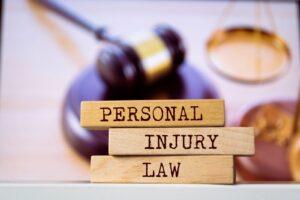The ribs are the bones that protect the most important and most fragile organs in the human body. They act as a shield to keep the heart and lungs safe from harm. When something causes a rib fracture, this shield is compromised. There are many different things that commonly cause rib fractures, ranging from simple falls in the home to injuries sustained while participating in sports.
Fractured ribs can be incredibly painful. Not only do they cause discomfort, but they also may lead to serious internal medical conditions and even death. Researchers have found that rib fractures are the most frequently seen injury of chest-related injuries in trauma centers and emergency rooms. One study found that about 40 percent of all chest-injury cases are the result of rib fractures.
Rib fractures can occur to young children, elderly adults, and everyone in between. Rib injuries are usually more severe for the elderly due to bone fragility, which increases with age. Elderly patients are more likely to experience multiple fractures and are more susceptible to encounter future complications.
What Is a Fractured Rib?
A rib fracture is a crack or break of a bone of the ribcage. A break in the thick tissue that connects each rib to the breastbone may also be considered a fractured rib, even when the bone itself is not broken.
There are many different reasons why a rib fracture occurs. Depending on the severity of the incident that causes the injury, a rib fracture may involve only one rib or multiple ribs. Although about 12 percent of rib fractures result in only one broken bone, it is more common that a patient suffers multiple broken ribs from a single traumatic incident.
The more fractured ribs the patient suffers at one time, the higher the chance they will encounter complications later on and could even die from the injuries. Numerous studies have found that of the hundreds of patients who suffer from fractured ribs, more than 10 percent die from their injuries, usually within the first 24 hours of the trauma.

How Do Rib Fractures Occur?
The most common cause of fractured ribs is direct trauma to the chest. This can be caused by a variety of events and activities, such as:
- Motor vehicle accidents
- Assault
- Contact sports
- Falls
- Receiving CPR
- Work accidents
Most rib fractures occur as a result of car accidents. A rib can also be fractured by repeatedly coughing or sneezing hard. Additionally, a type of break called an “overuse rib stress fracture” may be sustained from repeated movements such as swinging a golf club, swimming, or rowing.
Another condition that may cause rib fractures is having weaker bones than normal because of a preexisting medical condition, which may cause the bones to be more vulnerable to injury. Fractures resulting from this condition are called “pathologic fractures.” A pathologic fracture can occur from little or no trauma to the bones during normal, daily activities. Many different underlying conditions can cause this kind of fracture, including:
- Osteoporosis
- Tumors
- Infection
- Specific bone disorders.
Contact our Kansas city personal injury lawyers now.

What Are the Symptoms of a Fractured Rib?
Depending on the cause and severity of the fracture, symptoms of a fractured rib will vary from person to person. The most significant indicator of a fractured rib is sharp and sudden chest pain or discomfort. Fractured ribs can cause breathing to be painful because the muscles used to breathe pull on the ribs. This pain will be worse during deep breaths, shouting, laughing, coughing, and sneezing. Chest pain may also get worse when moving or twisting the entire body.
Occasionally, people will experience pain at the precise location of the broken rib. The fracture may even be felt over the skin in some cases. Visible bruising also may present with fractured ribs. In more severe injuries, there will be a noticeable deformity of the chest wall. Multiple rib fractures may cause the chest wall to shift abnormally while breathing.

Why Should I Go to the Doctor for a Fractured Rib?
It is important to seek prompt medical attention when experiencing chest pain or when a rib injury is suspected as a result of an accident or other traumatic event. Rib fractures are not something to be taken lightly and should be examined by a health professional as quickly as possible. An untreated fractured rib may cause complications that escalate to a more severe condition such as a collapsed, punctured, or bruised lung, flail chest (when ribs become detached from the ribcage), pneumonia, and even death.
Additionally, rib fractures can help doctors determine the severity of other injuries after an accident or trauma to the chest. When ribs are broken from any abrupt contact, there are likely other injuries that exist that need to be examined by a doctor. A fractured rib may help give health professionals notice of other injuries in the chest and abdomen that otherwise would have been overlooked. When ribs are fractured, other organs may be injured such as the heart, spleen, and blood vessels.
How Can Rib Fractures Be Treated?
Similar to the symptoms of a broken rib, the treatment for broken ribs will vary from person to person, depending on the severity of the injury. Due to the mobile nature of the chest cavity and its need to expand in order to breathe, the most effective treatment for fractured ribs is simply rest over time.
The standard treatment for most rib fractures is supportive care. Supportive care is a type of treatment that targets alleviating the symptoms of the injury instead of healing the broken bones. This is appropriate treatment for rib fractures because, unlike other broken bones that are put in a cast to immobilize and heal the fracture, the chest wall cannot be immobilized because it must be able to move for the injured person to breathe.
Supportive care for rib fractures is primarily focused on pain management. Pain management is important for this kind of injury because if someone is in too much pain, it could lead to respiratory depression. This occurs when breaths are slower and more shallow than normal, which can lead to a buildup of carbon dioxide in the body and result in further health problems. Alleviating the chest pain will provide some relief to allow more comfortable, deeper breaths.
Some common methods of supportive care include:
- Medication. Over-the-counter pain medicine is enough for many minor fractures, but some patients may be directed to take stronger prescription drugs for more severe injuries.
- Breathing techniques. It is normal for people with a broken rib to avoid taking deep breaths, but this may put them at risk for more complications and illness. Doctors may give patients a device that encourages deep breathing. It is important for an injured person to be mindful of the possible difficulties that may arise from shallow breathing after a rib injury. This kind of awareness can encourage those with rib fractures to regularly practice deep breathing during healing, even if it causes some discomfort.
- Ice treatment. Placing ice on the cracked ribs in 15 to 20-minute increments several times a day will reduce pain and swelling.
- Heat therapy. Once swelling is reduced, which usually takes several days after the injury, placing heat on the injury will aid in relaxing and soothing the chest muscles. A heating pad or warm cloth will reduce discomfort and increase muscle flexibility.
- Do not tape or wrap the chest or abdomen. Many people with fractured ribs make the mistake of tightly wrapping the injured area. Even if it provides some pain relief, it is not a good idea to wrap the body this way because it may restrict breathing and eventually cause other complications.
Supportive care is typically done at home while the fractured ribs heal on their own. Supportive care is an inexpensive and uncomplicated treatment option compared to an in-patient care facility or hospital.
In some cases, however, the injured person may be hospitalized to treat their broken ribs. Admission to the hospital for recovery is most often the case when there are multiple broken ribs or when the patient is elderly or especially at-risk for additional complications.
Surgical treatment of a fractured rib is rare and is only considered in specific circumstances. Surgery to repair any deformities caused by rib fractures may involve implanting metal plates and rods to stabilize the ribs.
A fractured rib will usually take about six weeks to heal. Rib fractures in young, healthy people usually heal completely with no long-term problems. However, older adults and those who suffered more severe chest trauma have a greater risk to encounter additional complications and are more likely to experience a longer recovery period.
Do You Have a Fractured Rib As a Result of Someone’s Negligence?
If you suspect that you suffered a rib fracture, it is important to seek medical attention right away. You should seek treatment as soon as you experience a harmful event or have any discomfort in your chest. Rib fractures can be life-threatening if they go untreated, especially in older adults.
When someone suffers multiple fractured ribs, the injury will be more serious and should be treated immediately by a health professional. Treatment will vary by the severity of the injury. Pain medication can help with discomfort, but ultimately, healing from a rib fracture will take rest, time, and patience.




